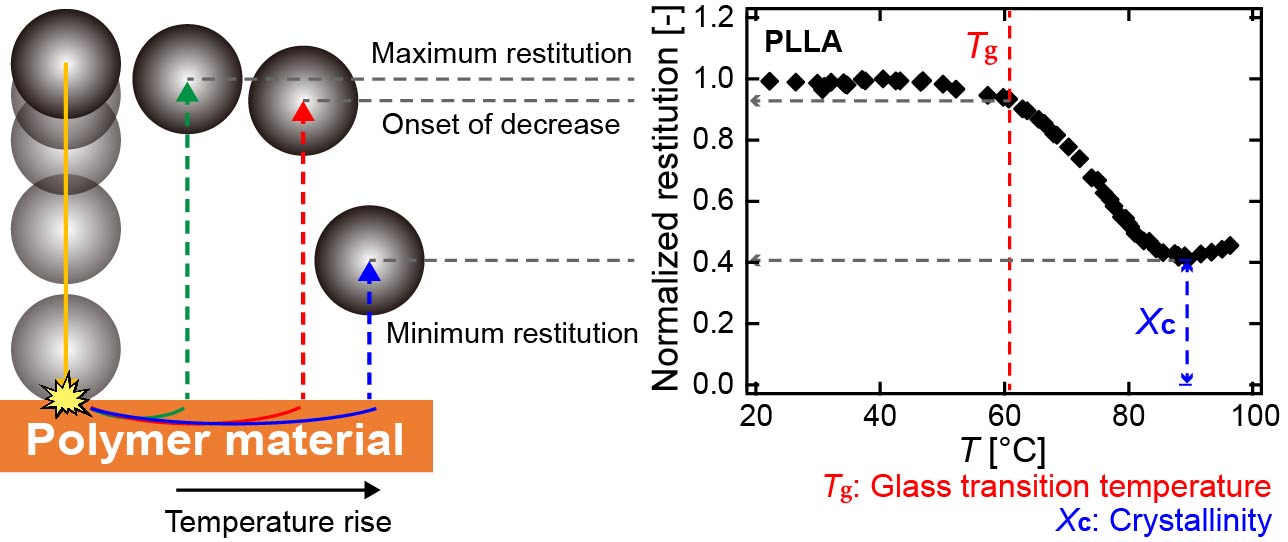The glass transition temperature (
Tg) is a representative temperature at which polymer chains can perform the segmental motion and the degree of crystallinity (
Xc) is the crystal fraction of a polymer. The order-disorder transition temperature (
TODT) is another characteristic temperature where microphase separation happens in block copolymers (BCPs). Since lots of polymer properties change dramatically according to
Tg,
Xc, and
TODT, it is important to measure them precisely, especially when determining processability and thermal stability of polymeric materials.
However, conventional techniques like differential scanning calorimetry (DSC), dynamic mechanical analysis (DMA), and X-ray diffraction (XRD) have some inconveniences in measuring those properties at the same cycle of measurement. For example, with DSC, it is difficult to detect Tg of intrinsically rigid semi-crystalline polymers due to their restricted segmental motion and the enthalpy of fusion value of 100% crystalline polymer is required to calculate Xc. DMA necessitates a relatively larger amount of sample for the measurement, and XRD is not always easily available.
As a result, based on the Hertz contact theory and rheology, we developed a new intuitive technique to simultaneously measure Tg, Xc, and TODT with a relatively small amount of sample (<1 mg). It is well-known that material properties can be observed by measuring the response to external stress and the restitution height and rheology are highly related. Therefore, we investigated the relative elastic response of polymers with respect to their glassy state by measuring the rebound of a ball on intact polymeric films while varying the temperature. With various amorphous and semi-crystalline polymers, including BCPs and intrinsically rigid conjugated polymers, we showed that Tg can be determined by the onset of the dramatic decrease in restitution, Xc is the normalized minimum restitution for Xc up to 50%, and TODT is related to another restitution decreasing point at higher temperatures. All the measured Tgs, Xcs, and TODTs by the ball collision method matched well with the theoretically expected and/or well-known values measured by the conventional techniques. We further quantitatively analyzed the effect of film thickness and an approach to measure Tg, Xc, and TODT of sub-micrometer-thick films will also be discussed.


